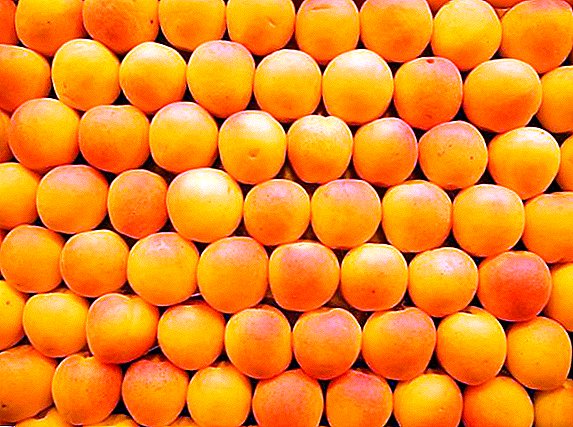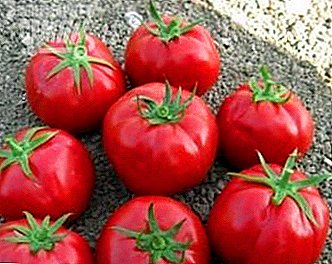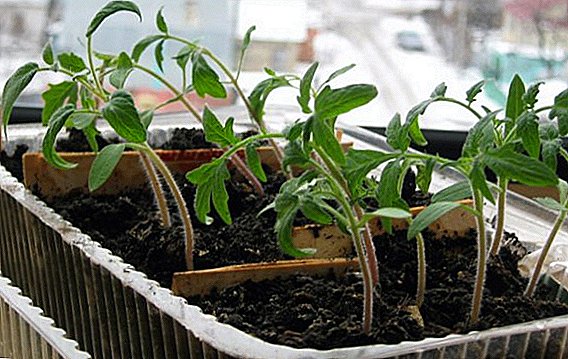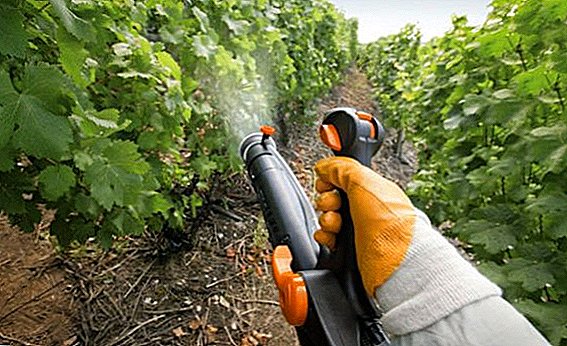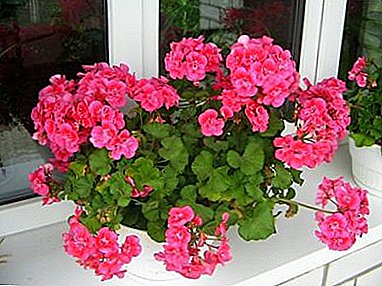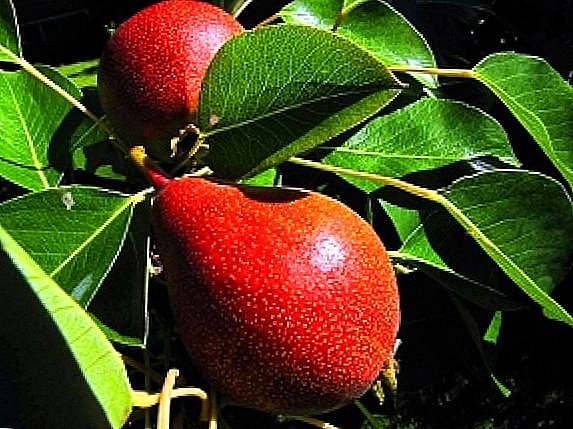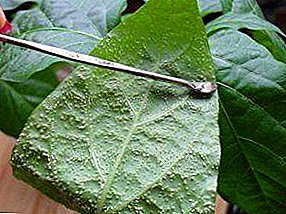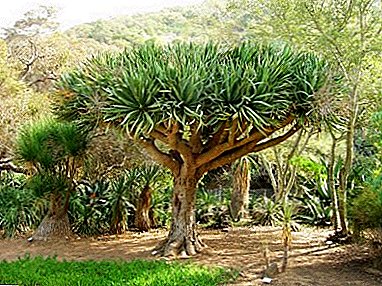
Dracaena Draconic (Canarian) grows in tropical and subtropical regions of Southeast Asia, as well as in Africa - including the Canary Islands.
Origin of the name This tree is associated with an ancient Indian legend, according to which the bloodthirsty dragon once paid the price for his addiction to warm elephant blood: a huge old elephant, dying, crushed a cruel predator.
The blood of both giants, having mixed together, gave life to trees of trees unseen until then: with mighty, like elephant's legs, trunks, bundles of sharp, like dragon's teeth, leaves and blood-red resin.
Description
Indeed, dragon dracaena - very powerful and long-lived plant, in natural conditions, reaching a height of 20 m and again growing in width to a thickness at the base of 4 m.
Each branch completed with a thick bundle of narrow, long, sharp gray-green leaves.
If you cut the barkcolorless juice-resin, which quickly acquires a rich blood-red color in the air and is therefore called “the blood of two brothers” (according to legend) or “vermilion” (which in itself means “dragon's blood”), and also endowed with special healing and magical powers.
In room culture draconian dracaena maintains both slow perennial development, and exotic trunk shape, and bundles of sharp leaves, and pitch-blood, but does not grow above one and a half meters.
You can listen to a more detailed description in the following video.
Dracaena dragon: photo
Dracaena dragon tree: photo in natural conditions.

Dracaena dragon's: photos of plants in pots.


Home care
Lighting
Light will need a lot, it should come in large quantities, to be bright, but mostly scattered, as near windows facing south-west and south-east. On the purely south side, in the summer, you need to take care that this sun is not burned by direct sunlight.
In the summer months, “vacations” in the open air are very useful, and care should be taken to ensure that the plant is not in the sun.
If the light of the dragon tree is just enough, it will decorate the leaves. thin reddish border.
Temperature
Optimum temperature range ranges from 18 to 25 degrees in summer. Wintering is preferable cooler, but the temperature should not fall below 12 degrees.
Air humidity
In spring and summer dragon dracaena should be sprayed frequently using soft water.
In winter, in a room with a temperature of 12 to 15 degrees, spraying is stopped. If the wintering place is a warm apartment with central heating and dry air, spraying is still necessary.
The soil
You can use ready-made soil for palm trees and dratsen, or cook mixture, which includes nutrients - leaf earth, turf ground, humus; baking powder - coarse sand and fibrous acidifier - peat. All ingredients are taken in equal amounts.
Landing
 Landing tank choose a ceramic, porous, with a hole in the bottom.
Landing tank choose a ceramic, porous, with a hole in the bottom.
At the bottom It is imperative to place a drainage (expanded clay or small pebbles), then pour a layer of perlite or coarse sand, then slide prepared soil, “straighten” the straightened root system of the dracaena on this slide and fill the soil to the desired level, gently sealing it.
Such a fit will prevent the roots growing more to the side than deep down from rotting.
Transfer
Young home plants are transplanted annually, in spring time, adult specimens - once in 2-3 years, and in massive dratens of respectable age, you can simply replace the top layer of the earth with fresh, nutritious.
After the purchase A new copy is kept in quarantine for about two weeks, and then a decision is made to transplant: a young plant, which is closely in its capacity, can immediately receive a new “apartment”, and a more adult can wait until the new one moves into a new container until spring. During transplants, it is better to keep the old earthen room in order not to injure the sensitive root system.
Watering
Summer watering is carried out quite often, as the top two to three centimeters of soil dries, usually every other day. Use soft, well-settled water.
With the onset of autumn watering is reduced to one or two times a week, and in winter, at a low temperature of keeping, they are watered even less often.
If wintering is warm and dry, water as in the fall, not forgetting regular spraying.
Top dressing
In spring and summer special complex for palm trees and dratsen, or alternating mineral and organic supplements are made twice a month.
In winter feeding is carried out once a month (keeping warm) or does not fertilize the plant at all (in case of cold wintering).
Bloom
In room culture, the Canarian dracaena blooms exclusively seldom - a bunch of greenish small flowers with an unpleasant odor, which gives orange peeling fruits after pollination.
Breeding
You can multiply dracaena seeds and cuttings: apical and stem.
Seed propagation
In the spring the seeds are soaked for 24 hours in a warm growth stimulant solution, and then sown in palm soil, covered with plastic film and kept warm, airing the greenhouse and moderately moistening the soil. Germination time - from a month to two.
Seedlings need to be maintained with sufficient, but not excessive moisture, feed once a month and protect from excess sun.
When dracaena grow to a height of 4-5 cm, they can be seated in stationary pots.
Propagation by cuttings
 there is two ways of preparation such cuttings: air layouts and direct pruning.
there is two ways of preparation such cuttings: air layouts and direct pruning.
In the first method on the trunk below the top, a T-shaped incision is made into which wet peat is placed, and then wound with polyethylene. For a month, peat and high humidity stimulate root growth. Then the stem is trimmed slightly below the formed roots and the tip is planted in a separate pot.
Second way consists in a decisive pruning of the trunk with the tip. The injured places are sprinkled with crushed charcoal, and a cut of the apical cutting is additionally treated with a root formation stimulator. Stalk is planted in a prepared pot with a drainage layer and moistened soil.
Reproduction stem cuttings
A healthy young stem is cut into pieces with a sharp instrument so that each part has at least two height buds. Typically, the length of such segments is 3-5cm.
These cuttings are planted in prepared soil, kept warm, protected from intense sunlight and often sprayed. As a rule, within a month young shoots appear on them.
This video tells about the care of the dragon dragon.
Diseases and pests
 If the right conditions are ensured, dracaena hardly ill.
If the right conditions are ensured, dracaena hardly ill.
With care errors, a dragon tree can hit rot and fungal infections. This happens when a combination of low temperature and waterlogging. In such cases, you need to put the plant in a warmer place and eliminate excess moisture.
If the processes of rotting have spread widely (this happens most often with frost-bitten specimens), you will have to cut off the healthy cuttings and root them, and get rid of the rest of the plant. For fungal lesions, spray the fungicide solution.
Of the pests on the Canary dracaena spider mites and scale insects settle. The first remedy against them is the removal of insects with the help of a soap solution, but only the use of appropriate insecticides will finally eliminate them.
If you take root dracaena draconian (Canarian), it will gradually, stretching, like an umbrella, a dense branching cover, grow for many years and remind of ancient legends, sanctuaries of exotic cultures and ancient beliefs that a tree with red "blood" is endowed with a special vitality.
In addition, this plant perfectly cleans the air from formaldehyde and benzene.


